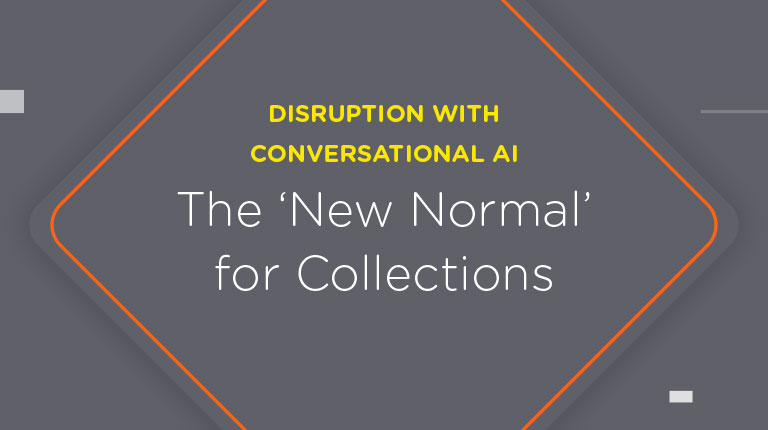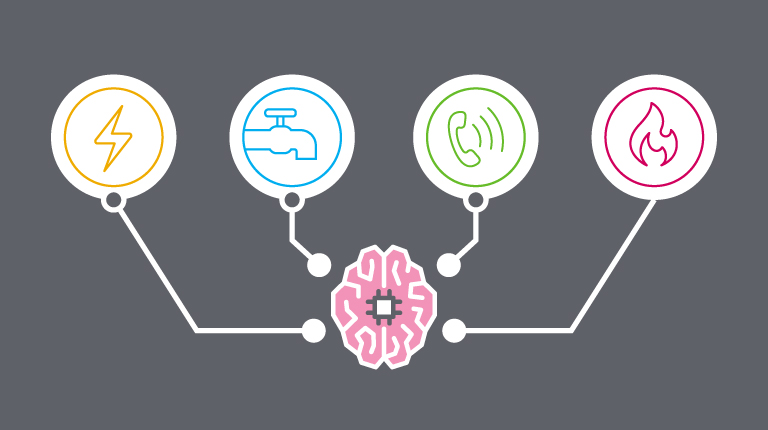Accounts Receivable Management (ARM) is on the brink of disruption. But why now?
For organizations in the ARM arena, operational efficiency is paramount. Agencies work tirelessly to update day-to-day contact center operations to drive profitability despite a competitive industry landscape. ARM is plagued with challenges, and they don’t seem to be getting any better.
What’s changed?
2020 has brought on a perfect storm for the collections space with more debt and high delinquency rates due to the pressure put on consumers from the economic effects of COVID-19. In fact, consumer debt has risen to record-breaking heights, at over $14 Trillion by mid-2020. High unemployment rates drive high rates of missed or delinquent payments. In the latest Financial Hardship report, TransUnion cites that over 58% of US consumers have been financially impacted by COVID-19. People are worried about their financial future, and their reaction will likely result in even more debt and delinquency.
Collections agents will feel the effects of this increase in volume. Without the right technology to support their contact centers, it’s likely that they won’t have the tools or capability to successfully support customers through their repayment efforts.
Payroll is by far the largest expense for collections agencies. Agencies are reliant on live agents to drive revenue meaning that hiring, retaining, and training agents to keep pace with the changing market is a top priority. Despite their best efforts for retention according to DailyPay, contact center agent turnover rates are twice the average for all other US occupations, with large call centers reaching more than 50%. Collection agencies have the worst of it, with some agencies reporting more than 100% churn.
While these numbers are alarmingly high, it makes sense. Being a contact center agent in the collections space is no easy task. Collections agents take the brunt of the frustration from a constant queue of upset customers, often causing low satisfaction rates from agents.
2020 has tested the limits of the collector workforce. Under short notice, agencies had to move their staff to work from home to ensure business continuity. Some even faced challenges with ensuring that the staff had correct and secure infrastructure to continue working from home. In the long term, agencies need to rethink the way they plan to support a customer base that is under stressful financial circumstances.
Is digital transformation the answer?
Collection agencies are in the business of supporting consumers through tough times and ultimately helping consumers fully recover from debt. As mentioned earlier, agencies have a slew of challenges in their efforts to support consumers, including high turnover rates for agents, unexpected increase in volume of collections, and even the intense regulatory environment for agencies.
But, when humans fall short, technology can be the answer. In fact, according to McKinsey, more than 60% of digital transformation initiatives and pilots actually focus on improving customer experience. Collection agencies are no different and require the optimization of business processes to meet ever-changing customer preferences and market requirements. Digital transformation is poised to restructure how and when an organization interacts with a customer in the digital-first age. Adapting to new technologies is the answer for collection agencies striving to continue support for customers through the changing economic environment.
Where do you even start?
Conversational AI is a proven catalyst for digital transformation across industries. Collections and accounts receivable management industries are uniquely positioned to utilize Conversational AI to reduce their dependence on human resources while improving recovery rates.
Conversational AI is the art and science of building messaging or speech-enabled assistants or applications that automate communication, offer human-like interactions, and create personalized customer experiences at scale.
Virtual agents powered by Conversational AI help automate collection calls in a human-like and humane approach. According to a 2018 consumer sentiment survey conducted by Interactions and The Harris Poll,1 in 4 US Consumers prefer interacting with a virtual agent (instead of human agents) when dealing with uncomfortable or embarrassing financial information, while 70% are content to not interacting with human agents during financial circumstances.
Regardless of the nature and type of transaction, customers crave effective service. And when it comes to the collection and recovery industry, consumers are explicitly demanding disruption driven by Conversational AI.
How will live agents react?
Conversational AI improves the productivity of agents, while simultaneously improving customer experience. How? It’s simple. The Conversational AI solution has the capability to weed out the wrong party contacts for live agents, increasing the right party contact rates. This allows agents to focus on revenue-generating tasks. Through a conversational, natural, and human-like approach, Conversational AI can create payment arrangements for customers that are hoping to rid themselves of outstanding debts, allowing live agents to focus on transactions that require human reasoning. It’s a win-win, customers and agents are both happy while organizations recover more revenue.
What’s next?
In trying times, disruptors and innovators thrive. Collections agencies are on the brink of their digital transformation journey, and Conversational AI is the start.





